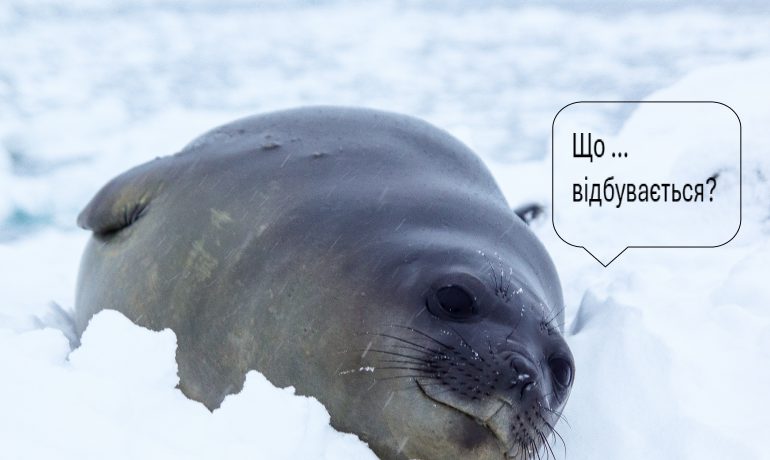Sharp warming reached not only Ukraine, but also Antarctica. But if it’s summer here now, then it’s the middle of winter there.
On July 16, a significant increase in the maximum daily temperature was recorded at Ukrainian Vernadsky station. It increased by more than 8 degrees (from – 4.2°C to 4.5°C).
 The plus temperature was held for almost two days – July 16-17. It rained and snowed. Also, temperatures slightly above 0 degrees were recorded at British Rosera station, located 300 km south of Vernadsky, that is, closer to the South Pole.
The plus temperature was held for almost two days – July 16-17. It rained and snowed. Also, temperatures slightly above 0 degrees were recorded at British Rosera station, located 300 km south of Vernadsky, that is, closer to the South Pole.
How do scientists explain such temperature anomalies? Earlier we wrote about the phenomenon of “atmospheric river”. It is a narrow strip with a high concentration of atmospheric moisture, which quickly transports warm masses of air and moisture from the tropics to the polar regions.
The temperature jump recorded at our station is precisely related to the atmospheric river.
If such cases become more frequent, the melting of glaciers will intensify, which in turn will lead to gradual desalination of coastal waters. And this is fraught with the destruction of various ecosystems of both the white continent and the ocean around it.
 In total, over the last 5 years, temperatures at the station rarely fall below -10°C, while for the previous 5 years they were just as rare, but were below -15°C. Until the 1980s, winter temperatures dropped to -30°C. That is, warming is very pronounced in Antarctica, and it is a trend affecting our entire Planet.
In total, over the last 5 years, temperatures at the station rarely fall below -10°C, while for the previous 5 years they were just as rare, but were below -15°C. Until the 1980s, winter temperatures dropped to -30°C. That is, warming is very pronounced in Antarctica, and it is a trend affecting our entire Planet.
We remind you that everyone can see weather measurements at Vernadsky station on our website in the “Antarctica Online” section.
We would like to thank our meteorologists Anastasiia Chyhareva and Denys Pishniak for their help in preparing the materials.


